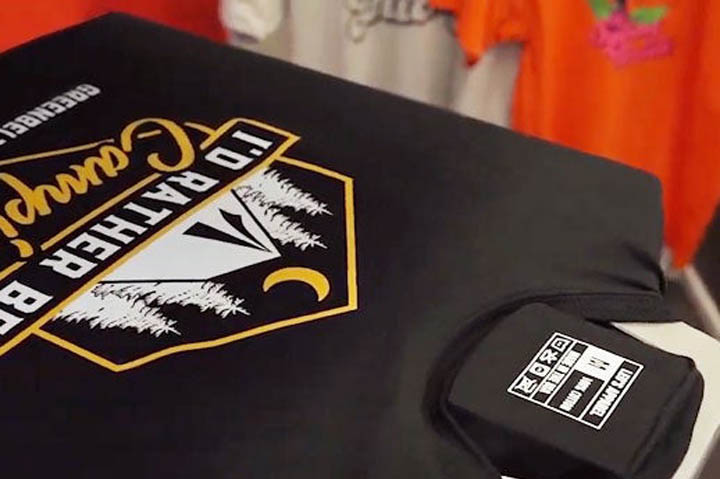Product Hub August 26, 2021
Five Tips for Selling Private-Label Apparel
TikTok entrepreneurs have helped spur interest in relabeled clothing for branded merch lines.
Private labeling – where a manufacturer’s tag is replaced with a clothing brand or company logo tag – is a trend for a reason. It boosts the perceived value of a garment, giving it an extra retail touch. During the pandemic, with the rise in e-commerce and print-on-demand activity as well as an influx of “homepreneurs,” private labeling also grew in popularity.

Private labeling adds to the perceived value of a garment. It’s seen a boost in popularity during the pandemic, thanks in particular to TikTok entrepreneurs looking to start their own branded-merch lines.
“It’s blown up,” says Dave Conner, digital marketing manager at Stahls’ Transfer Express (asi/91804), of the demand for private labeling services. “TikTok is where a lot of these conversations took place. These are twentysomethings and sometimes even younger people who just wanted to start a brand. … Everybody has those relabeled shirts.”
In addition to providing more brand exposure, private labeling has the benefit of “allowing for complete control of the product margin,” according to Gina Barreca, director of marketing at Top 40 supplier Vantage Apparel (asi/93390). “Since the manufacturer name isn’t on the shirt, it’s more difficult to price shop or compare.”
Here are some pointers to consider when creating private-label garments for clients.
- Use the right apparel. Start with high-quality T-shirts that have a retail look and feel. Many suppliers offer shirts with tearaway neck tags to make it simple to customize with a screen-printed or heat-transfer label, Barreca says. Another thing to remember is that not all products can be relabeled. The original manufacturer must allow for rebranding on their products.
- The shirts must be decorated. Reselling blanks as one’s own product is a huge red flag, Conner says.
- Include all relevant information on the new tag. There are three things the Federal Trade Commission (FTC) requires for clothing labels: what the shirt is made of (fiber content), where the T-shirt was made (country of origin) and company identification. The company name can be the clothing-line brand, rather than the shirt manufacturer, but it must be listed as the legal name in which you do business, according to Transfer Express. It’s also useful to retain things like the T-shirt size and text or symbols relaying laundering instructions so consumers know how to care for the garment. Transfer Express offers a free ebook with pointers on creating custom shirt tags.
- Consider how to relabel the garment. Screen printing, heat transfer or pad printing are great methods for neck labels, since these save the wearer from potential skin irritation. Woven labels are another option. External woven labels – either on the hem or the sleeve of a tee – are a subtle but high-end way to add an extra pop of branding to clothing lines. Vantage Apparel has a list of various relabeling methods on its website.
- Offer finishing services. Other ways to elevate private-label apparel include folding and bagging the garments or adding a hangtag. Hangtags can tell the brand’s story or even include a double-sided sticker with a coupon incentivizing customers to visit the brand’s online store.

Product Hub
Find the latest in quality products, must-know trends and fresh ideas for upcoming end-buyer campaigns.
